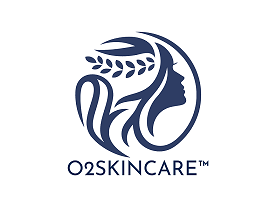Introduction
Breathing is an act as natural as life itself, yet the science behind what we humans breathe and how it differs from what sustains aquatic life is a tale of two oxygens. This blog explores the critical differences between diatomic oxygen (O2) – the life-sustaining element for humans – and dissolved oxygen (DO), essential for aquatic organisms.
Diatomic oxygen's role in human health extends far beyond basic respiration. It is the cornerstone of aerobic metabolism, driving the biochemical processes that fuel our cells - and results in humans having energy.
The Essence of Breath: Diatomic Oxygen (O2)
Oxygen, a colorless, odorless, and tasteless gas, is fundamental to human survival. Found in the Earth's atmosphere as diatomic oxygen (O2), it plays a crucial role in cellular respiration. Humans inhale O2, which then travels to every cell in the body, powering the production of energy. But O2's role doesn't stop at mere respiration; it's also involved in more complex biochemical processes. Diatomic oxygen can undergo reduction, forming Reactive Oxygen Species (ROS), which are vital in controlling gene expression and aiding in cell growth. However, an excess of ROS can lead to cellular damage, contributing to diseases like cancer and neurodegeneration. This delicate balance highlights oxygen's pivotal role in both health and disease.
This paradoxical nature of oxygen underscores its complex relationship with human health, shaping our understanding of oxidative stress and its link to various chronic diseases.
Oxygen Underwater: The Role of Dissolved Oxygen
In contrast, dissolved oxygen (DO) refers to oxygen molecules that are dispersed in water. Essential for aquatic life, DO is the oxygen fish and other marine organisms breathe. It enters water bodies from the surrounding air and is a byproduct of photosynthesis in aquatic plants. The concentration of DO in water influences the health and diversity of aquatic ecosystems. When DO levels are too low, it leads to hypoxic conditions, endangering marine life.
Skincare Industry's Oxygen Claims: A Misconception
In the realm of skincare, there's a common misconception regarding oxygen's role. Many products claim to 'deliver oxygen' to the skin. However, these claims often refer to dissolved oxygen, which human skin, being lipid-based, cannot effectively absorb. This contrasts sharply with the capabilities of diatomic oxygen-based skincare products, which are designed to deliver oxygen beneath the skin's surface, providing genuine benefits. This distinction points to the need for clarity and honesty in the skincare industry's marketing language.
Unmasking the Oxygen Myth: Peeling Back the Layers of Misconception
The skincare industry often makes grand claims about the benefits of oxygen in their products. However, a closer examination reveals a landscape riddled with misconceptions and misleading marketing tactics.
The skincare industry's use of oxygen-related claims is a classic example of how marketing can often blur the lines of scientific accuracy. By using terms like 'oxygen-rich' or 'oxygen-infused', brands create an allure of advanced technology and enhanced effectiveness. This marketing strategy taps into the general perception of oxygen as a symbol of purity and vitality, thus appealing to consumers' desire for healthy and rejuvenated skin. However, these claims are more about evocative imagery than factual substance. And are certianly not about science.
The Dissolved Oxygen Deception
Many skincare products boast about containing 'oxygen' as a key ingredient. The truth, however, is that they are most often referring to dissolved oxygen, which is fundamentally different from the diatomic oxygen (O2) our skin needs.
The Blood Flow Misconception
Increasing blood flow to the skin surface can indeed promote skin health by delivering nutrients and removing waste products. However, the leap from increased blood flow to enhanced skin oxygenation is a stretch. The oxygen carried in the blood is bound to hemoglobin and is not readily available to be absorbed directly by skin cells. Therefore, products claiming to increase skin oxygenation by boosting blood flow are not delivering oxygen in a way that is meaningful for skin health or appearance.
The Role of Marketing in Skincare's Oxygen Myth
Scientifically, the skin's ability to absorb oxygen from external sources is limited, particularly in the form of dissolved oxygen in water-based products. The oxygenation that skin requires is primarily obtained from the body's internal blood supply, not from topical applications. This fundamental biological fact stands in stark contrast to the claims of many skincare products.
The tale of two oxygens – diatomic and dissolved – reveals a fascinating aspect of our natural world. While humans and terrestrial animals rely on O2 for survival, aquatic life thrives on DO. The understanding of these two forms of oxygen not only deepens our appreciation of the natural world but also underscores the importance of scientific accuracy in product marketing. As we continue to explore the wonders of oxygen, let's breathe in this knowledge and dive deeper into the science that surrounds us every day.
Embracing this truth in marketing not only builds trust but also propels the industry towards more genuine innovations in skincare.
Written with assistance from chatGPT
